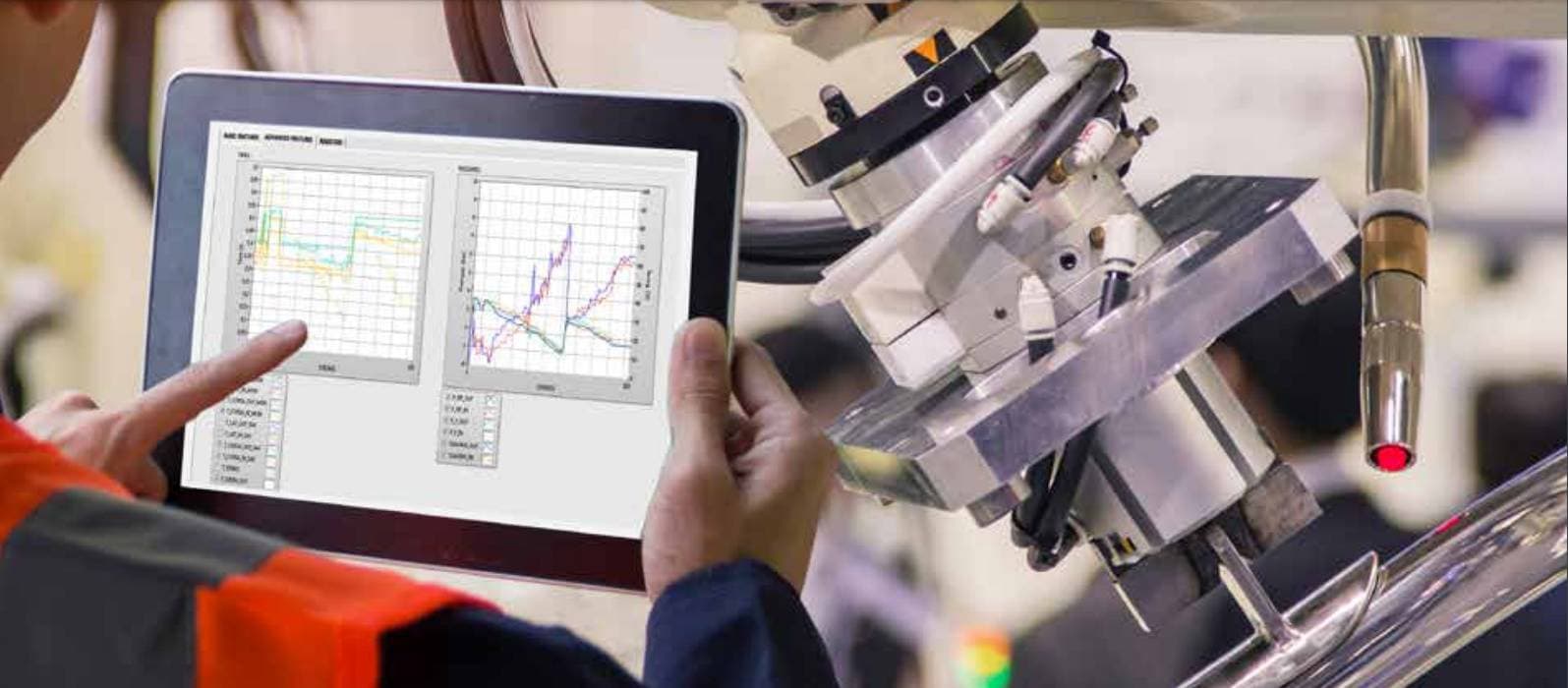The Machinery Directive is a very ambitious project of the European Community, to provide shared guidelines for the production of machinery, according to minimum requirements provided by law.
First published in June 1989, followed by a series of updates in 1998, 2006 and most recently 2021, resulting in rules that are often underestimated by companies, for which application becomes a real headache!
But let us take a small step back.
On 21 April 2021, the European Commission published its official proposal to revise the Machinery Directive 2006/42/EC calling it the “New Machinery Regulation”.
A new directive, which fits better with the technological advances made in the last decade and is intended to give a new boost to the machinery sector affected by the pandemic.
The need to modernise the legislation arose from a revision of the old Machinery Directive, which revealed large regulatory gaps and lack of standards between Member States, leading to different application models between countries in recent years.
This new revision, therefore, arises from the need to standardise health and safety requirements within the European Union to ensure that they are up to date with technological progress (such as artificial intelligence), the design, construction, and trade of machinery.
It is the technological aspect that attracts more attention, as the old directive does not sufficiently cover the new risks arising from emerging technologies, such as those relating to human-robot interaction, given the increasing use of collaborative technologies in industry.
To this must be added the complexities of managing increasingly connected machines and software updates after the product has been placed on the market.
With a view to digital transformation, the new regulation intends to encourage the use of digitised documents, abandoning paper where possible and thus embracing the increasingly growing sustainability policy advocated by the European Union.
It is important to point out that the old legislation had some gaps, failing to consider some important aspects, for example:
Big absent are self-driving vehicles, which therefore have the urgency to be defined by standards like other cars.
The same situation applies to ‘high-risk’ machines (which include various types of sawing, wood and plastic processing and compression machines), the list of which goes back 15 years and is therefore obsolete.
Furthermore, the old directive has revealed many safety gaps over time, such as the possibility that machinery may be modified or have additional functions implemented after being placed on the market, all of which have become increasingly common over the last 15 years (last revision), also thanks to new technological developments.
In summary, the new Machinery regulation has 3 main additions:
Ensuring the safe use of artificial intelligence systems in machines
Legally clarify some current provisions and standardise the regulations leaving no room for interpretation
Allowing and encouraging the use of digital formats for the accompanying documentation of the machine.
The New Regulation is to all intents and purposes the new bible or milestone in the world of modern machinery regulations, however, it does not convince everyone for reasons that we will reveal later.
But let us look at the key points of the new Machinery Regulation.
Who is the new machinery regulation aimed at?
As for the old Machinery Directive, the new regulation applies to all machines (partial or not), spare parts, safety components, removable mechanical transmission devices and all lifting accessories such as chains, ropes, slings etc.
Privacy and protection of information
All those who come into contact with sensitive machine information such as authorities , manufacturers, importers, and retailers (including Member States and the Commission) must ensure the utmost secrecy of the data contained in the documentation provided.
The new Machinery Regulation contains a series of measures to protect the information needed to certify the conformity and traceability of machinery.
For those who do not comply with the standards and procedures of the Regulation, there are sanctions calculated on the basis of the highlighted discrepancies and decided by the Member States.
Risk-assessment remains mandatory for all machines and components
Before placing the machine on the market, each designer is obliged to carry out a risk-assessment to define the safety requirements of the same.
This involves a series of procedures to define a machine (or component) as safe and therefore marketable.
More specifically:
Risk-assessment is the term used to describe the method that identifies hazards and risk factors that have the potential to cause harm, indicate how to use them to avoid hazards or limit risks where they cannot be avoided.
The risk-assessment must be carried out by notified bodies specifically created by the Member States with a view to transparency and absence of conflicts of interest.
The New Regulation contains explanations on what characteristics notified bodies must have and what competences and documentation they need to carry out the risk-assessment procedures for machinery.
Machinery already on the market that today, in light of the new regulation does not comply with an adequate risk-assessment, must be subjected to revision and, if necessary redesigned, so as to align itself as much as possible with European standards.
Responsibility of designers and manufacturers
Manufacturers must always, for each machine, provide a European declaration of conformity, and ensure that all components relating to the machine are clearly and comprehensibly identified and traceable in the language of the product’s country of destination.
This declaration consists of a series of documents certifying the product against the standards required by the legislation; these standards must be met by the manufacturer, right from the design and construction phase of the machine.
It is always the manufacturer’s obligation to ensure that he has carried out the risk-assessment activities to guarantee the safety of the users of the machine and to record all accidents.
Any subsequent change made to a machine already on the market identifies the “modifier” as a new manufacturer and must in turn comply with all the obligations envisaged.
On the other hand, certification by a third party is required for machines identified as “high-risk”.
Responsibility of importers and distributors
Importers are considered to be those who purchase the machine and place it in a specific market, different from the one from which the machine originates.
The importer is obliged to check that all the health and safety requirements of the Machinery Regulation have been met and that the machine is accompanied by documentation (a sort of identity card with all the details of the machine, the instruction manual and the aforementioned declaration of conformity).
All this documentation must be kept for a minimum of 10 years.
It is also the importer’s responsibility to test the machine in case of anomalies or discrepancies by carrying out sample tests, as well as taking note of any complaints.
If a discrepancy with respect to standards and regulations is suspected, it is always up to the importer to take all necessary measures to correct the situation, or they can withdraw the machine from the market.
The figure of the retailer is the one who will deal with the resale of the machine as the word itself says (purchased from a manufacturer or an importer) to deliver it to the end user.
The retailer is obliged check that machinery has European certification and that it is accompanied by all documentation (provided by manufacturers and importers).
In addition, compared to importers and manufacturers, retailers must ensure that the machine’s storage does not damage or compromise its safety in any way.
Mixed reactions aroused by the Machinery Regulation
With the new Machinery Regulation, however, a series of concerns have arisen on some points of the proposal.
It is mainly trade associations that have raised concerns that this new legislation will further complicate the process of placing new machinery on the market.
In this regard, it is important to mention Orgalim (Federation representing the European hi-tech industry), quoting exact words:
“Orgalim welcomes the objective of improving harmonisation and broadening the scope of the regulation to cover new technologies, however, we have significant concerns about some of the measures included in the package, in particular:
Third party self-compliance assessment for all high-risk machines: Third party conformity assessment increases costs, adds administrative burden and time to market.
Legislation must remain technology-neutral, allowing the industry to remain versatile, agile, and innovative. This has helped companies to become undisputed world leaders in their fields while maintaining the highest level of safety for their machines. The introduction of new essential health and safety requirements for digital technologies in the legislation threatens this approach.
To find out more, we invite you to read the official page that deals with this topic: Machinery Regulation – Orgalim calls for the protection of a core pillar of Europe’s Single Market
The machinery sector is an essential part of the mechanical industry and one of the industrial pillars of the EU economy and the introduction of new digital technologies requirements threatens” an industry that needs to remain “versatile, agile, and innovative” to keep up with modern times.”
Approval and entry into force
The new Machinery Regulation will come into force after a defined period of 30 months from ratification by the national parliament, to allow manufacturers to adapt in good time.
States will be obliged to notify the Commission of the rules decided on sanctions within 24 months of the entry into force of the new Regulation.
What has been published, and which we have linked at the bottom of the article, represents the Commission’s final proposal, which will now have to be discussed by the Council and the European Parliament before being officially published in its final version.
This process may take approximately 18 months.
For further information, please read the full text of the proposal available HERE.
If, on the other hand, you need more information than what is described, also with reference to the use of cylinders inside the machines, contact us at info@cypag.com.





